Electronic Supplementary Material to:Changes in Global Vegetation Distribution and Carbon Fluxes in Response to Global Warming:Simulated Results from IAP-DGVM in CAS-ESM2*

Table S1. Plant functional types (PFTs) in IAP-DGVM and their corresponding abbreviations in this study.

Table S2. List of 16 models derived from CMIP5 used in this study.

Table S3. Partial correlation coefficients between the changes in fractional coverage (FC) of NEB, BDM, BDBsh, C3Ar, C3NA, C4,and temperature (T) and precipitation (P), respectively.

Table S4. List of six regions used in this study. Only land grid points are used in the analysis.
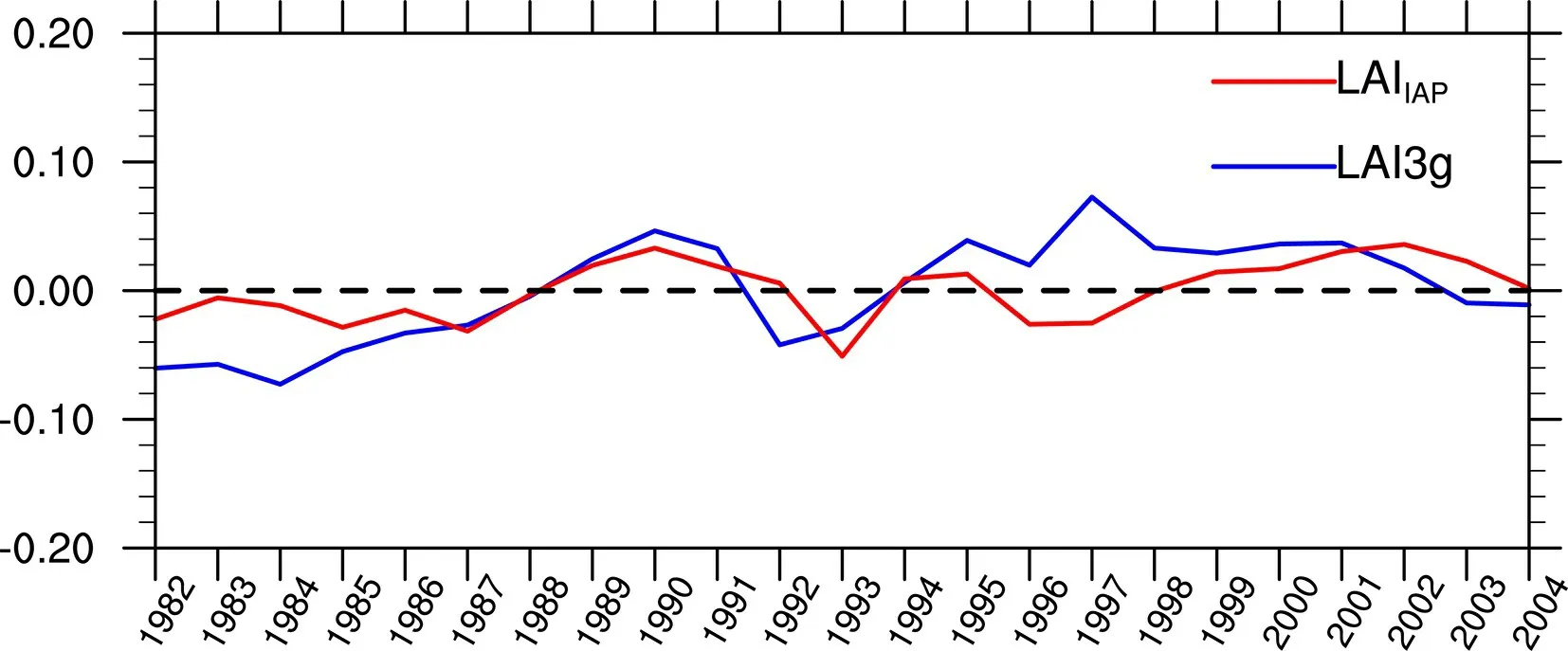
Fig.S1. The anomaly of LAI3g (blue) and LAI simulated by IAP-DGVM (red) over northern mid-highlatitudes 45°N-90°N. The linear correlation coefficient between the two lines is 0.48 (Prob<0.05, where Prob is the probability of statistical significance of the linear correlation coefficient). All units are m2 m-2.

Fig.S2. Spin-up method.

Fig.S3. Fractional coverage (units: %) of (a) trees, (c) shrubs, (e) grasses, and (g) bare ground in the present-day simulation. (b), (d), (f), and (h) are the same as (a), (c), (e), and (g), respectively, but for RCP8.5 simulations.

Fig.S4. Fractional coverage (units: %) of (a) NEB, (c) BDM, (e) BDBsh, (g) C3Ar, (i) C3NA, and (k) C4 in the present-day simulation. (b), (d), (f), (h), (j), and (l) are the same as (a), (c), (e), (g), (i), and (k), respectively, but for RCP8.5 simulations.
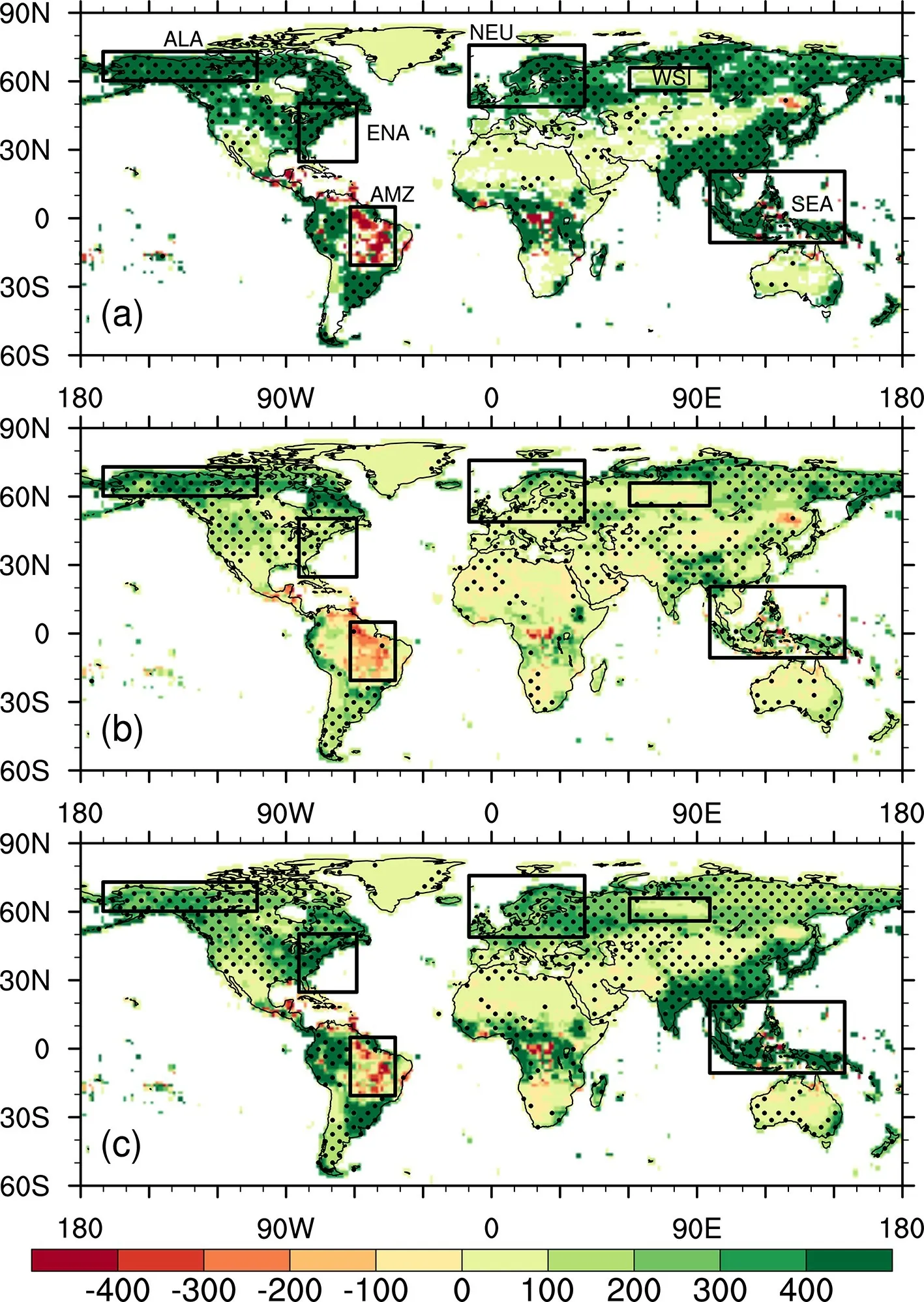
Fig.S5. The six selected regions are bounded by black rectangles in thefigure.
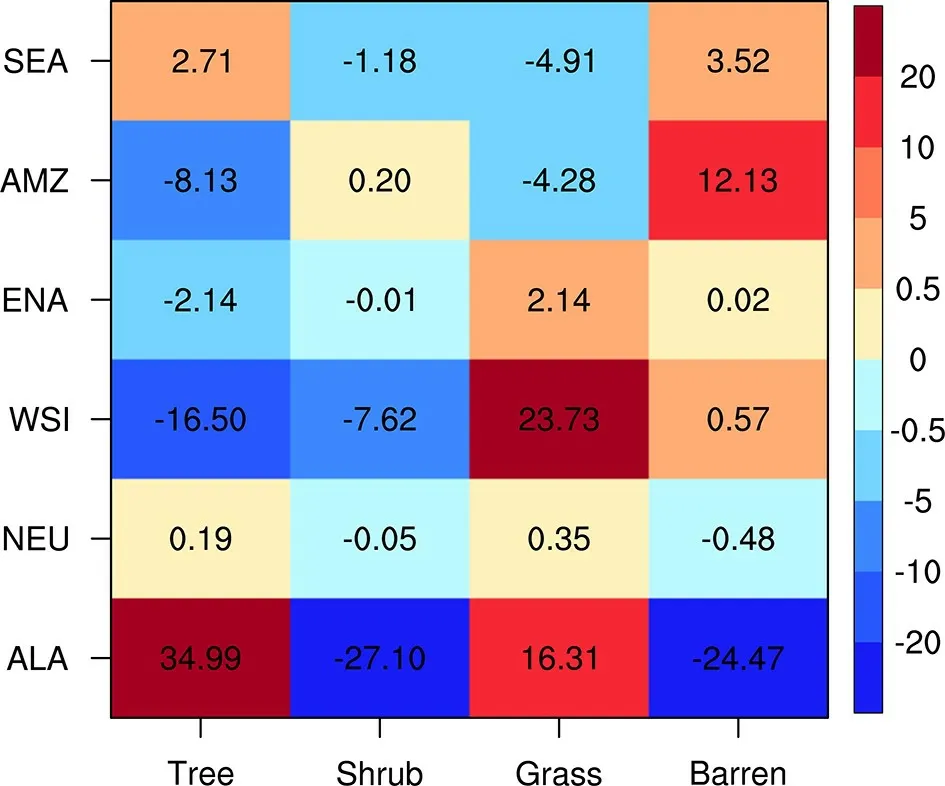
Fig.S6. Differences in fractional coverage (%) of tree, shrub,grass, and barren in the six selected regions. The y-axis represents the selected six regions that are Alaska (ALA),Northern Europe (NEU), Western Siberia (WSI), Eastern North America (ENA), Amazon (AMZ), and Southeast Asia(SEA).
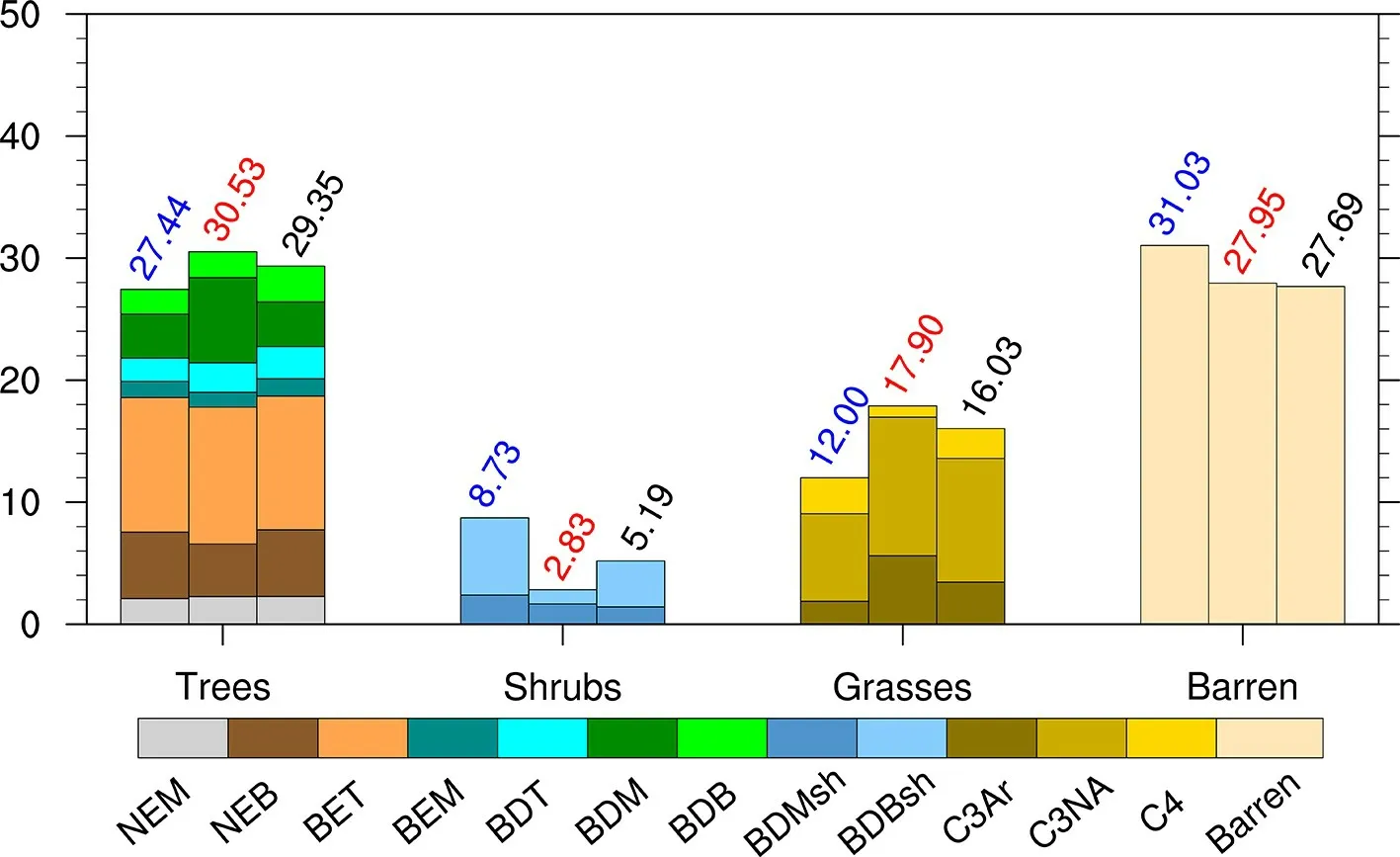
Fig.S7. Global weighted average fractional coverage (%) of each PFT for Pre (blue), RCP8.5(red), and eCO2 (black). The abbreviations of the PFT correspond to the information in Table S1.

Fig.S8. Differences in fractional coverage (units: %) of (a) trees, (b) shrubs, (c) grasses, and (d) bare ground between Pre and eCO2 (eCO2 minus Pre).

Fig.S9. Global means of carbon fluxes in Pre (blue), RCP8.5(red), and eCO2 (gray). The bars represent one standard deviation. All units are PgC yr-1.

Fig.S10. Spatial distribution of differences between Pre and eCO2 (eCO2 minus Pre) in(a) GPP, (b) NPP, and (c) Ra. All the units are gC m-2 yr-1.
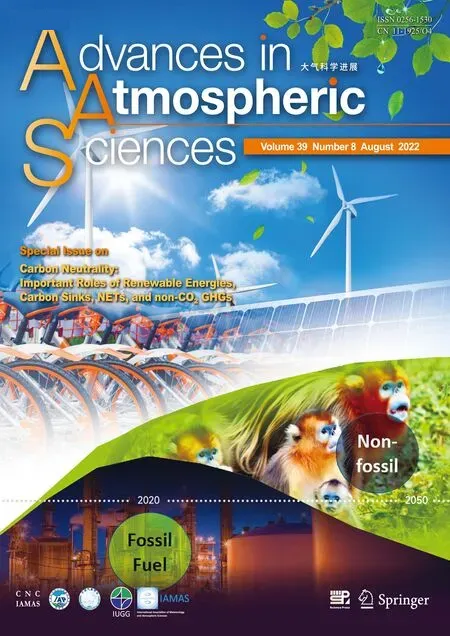 Advances in Atmospheric Sciences2022年8期
Advances in Atmospheric Sciences2022年8期
- Advances in Atmospheric Sciences的其它文章
- COP26: Progress, Challenges, and Outlook※
- Climate Warming Mitigation from Nationally Determined Contributions※
- The Chinese Carbon-Neutral Goal: Challenges and Prospects※
- A Concise Overview on Solar Resource Assessment and Forecasting※
- Frontiers of CO2 Capture and Utilization (CCU)towards Carbon Neutrality※
- The Variability of Air-sea O2 Flux in CMIP6: Implications for Estimating Terrestrial and Oceanic Carbon Sinks※
